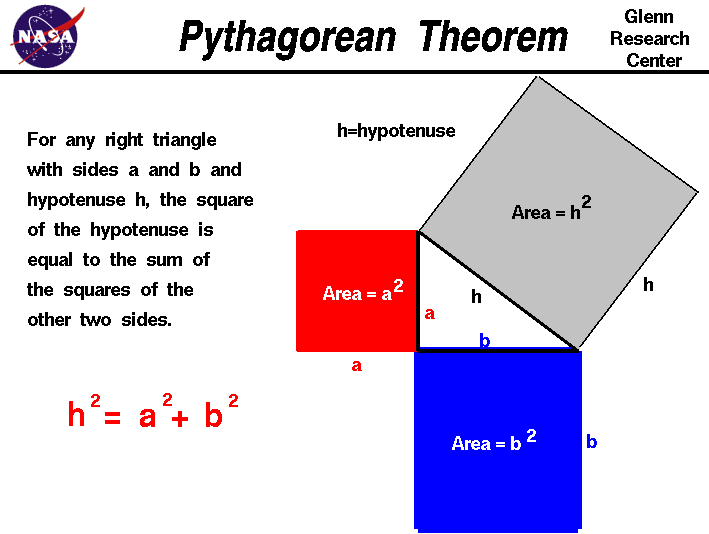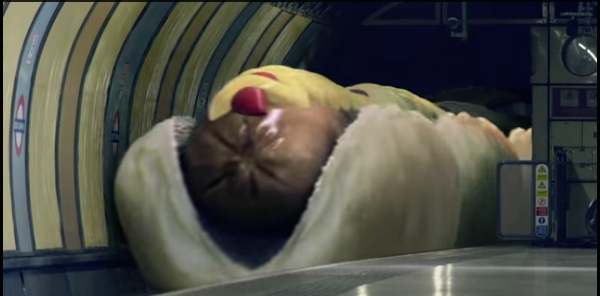The Shape of Things to Come - Geometry as a Path Through the Universe (and Other Puns)
In the modern world, everything we know is built on a foundation of numbers and their relationships. It's hard to imagine a time when that was a radical idea, but such a time existed. In fact, 2500 years ago, the Pythagoreans (named after their founder) were a mystic cult based on this very premise. It's difficult to blame them for getting carried away. Pythagoras is more famously credited with Pythagoras' theorem:

If Mathematics was a country, it's flag would almost certainly be a triangle. This is one of the first equations ever created, and is in many ways the basis of applied mathematics. In a relationship between three things, if you know two, you can find the third. You don't have to measure it directly! For early mathematicians, such a thing must've felt a little like magic, but it's magic that worked and in many ways helped create the world we see today.
From it we created further derivations:

Or for a non-right-angled triangle,

These equations were used by visitors to find the height of the pyramids, to find the size of the Earth and create accurate maps. Legendary mathematician and astronomer Tycho Brahe used triangulation to map the island of Hven, where his observatory was located.

Triangulation works by first setting out a line between two points, called the baseline. Once its length has been measured to a high accuracy, we then choose a prominent point in the landscape that's visible from both ends, measuring in turn their respective angles. We now have a triangle, a line and two angles. We then calculate the other two sides, which in turn become baselines from which we can make further calculations to other points, creating a huge network of triangles which accurately maps huge areas.

Techniques like these meant that the The Ordnance Survey of Great Britain could create more accurate maps of the Highlands in order to better subjugate 'unruly clans'. Later schemes were used to map India and the Himalayas. Nowadays a different form of triangulation is used by GPS systems, largely operating through General Relativity, which brings us neatly to its little brother.
Special Relativity
Fast-forward to Einstein, who used this ancient equation to discover something exceedingly weird - a secret hidden in geometry itself. In this section I'll be walking you through the mathematics of time travel, using a couple of simple equations, a gorilla, Ronaldo and a big hot dog. Strap in.
Imagine for a moment that a gorilla is sitting at a train station platform:

A hot dog passes on the track facing the gorilla:

Now, let's imagine that Ronaldo is on top of the hot dog, doing keepy-uppys in a fashion that surely cannot be condoned by health and safety.

You may not realise it yet, but we now have the ingredients for an equation. A few things to note:
The football Ronaldo is kicking leaves his foot with the same forward velocity as Ronaldo has himself, which is the forward velocity of the hotdog, so for Ronaldo, when the ball leaves his foot, it isn't hitting him in the face. It's travelling with him. Effectively, it's moving the same way for Ronaldo that it would be were Ronaldo not riding a giant hot dog through a post-apocalyptic Japan populated by sentient gorillas. As far as the Ball and Ronaldo are concerned, relative to each other, they're behaving as they would on a football pitch.
Of course the gorilla's watching this in amazement, and to him Ronaldo and the ball are clearly moving with the same velocity as the train relative to him. Here we now have three distances, set in a triangle.

Side B represents the distance the train itself is travelling.
Side A represents the distance the ball is travelling in Ronaldo's frame of reference.
Side C represents the distance the ball is travelling in the gorilla's frame of reference.
Thus, we have,

Now, we also know that d = vt (distance = velocity x time), so we can replacing each distance with a product of velocity and time to give us a new form of the equation:

Where in this instance v is the speed of the train, c is the speed of the ball, (which Ronaldo just happens to be kicking at the speed of light), t is the time of the train passing from the Gorilla's frame of reference, and t' is the time of the train passing from Ronaldo's frame of reference.
Here, c represents the speed of light, which is the same in every case. Therefore, t and t’ must be different. So, let’s find out what t’ is. Try to follow me as I rearrange the equation to make t’ the subject.

From this equation, we can see that as v gets bigger, the fraction (v^2)/ (c^2) gets bigger, which means that t’ becomes smaller compared to t. At ordinary giant hot dog speeds, the difference isn’t too much and we hardly notice it, but for speeds close to that of light, the difference is huge. An astronaut could travel to the end of the galaxy and back at 0.9999999999 times the speed of light. For him, about 9 months will have passed. For everyone on Earth, about 50,000 years. Everyone he’d ever known would be long gone. Civilizations will have risen and fallen many times. There may not even be an Earth left when he returns.
Happy Hallowe'en, folks!

- Gerry
(For interviews with local scientists and other science stuff, see my personal wordpress - https://coffeeandquasars.wordpress.com/)




